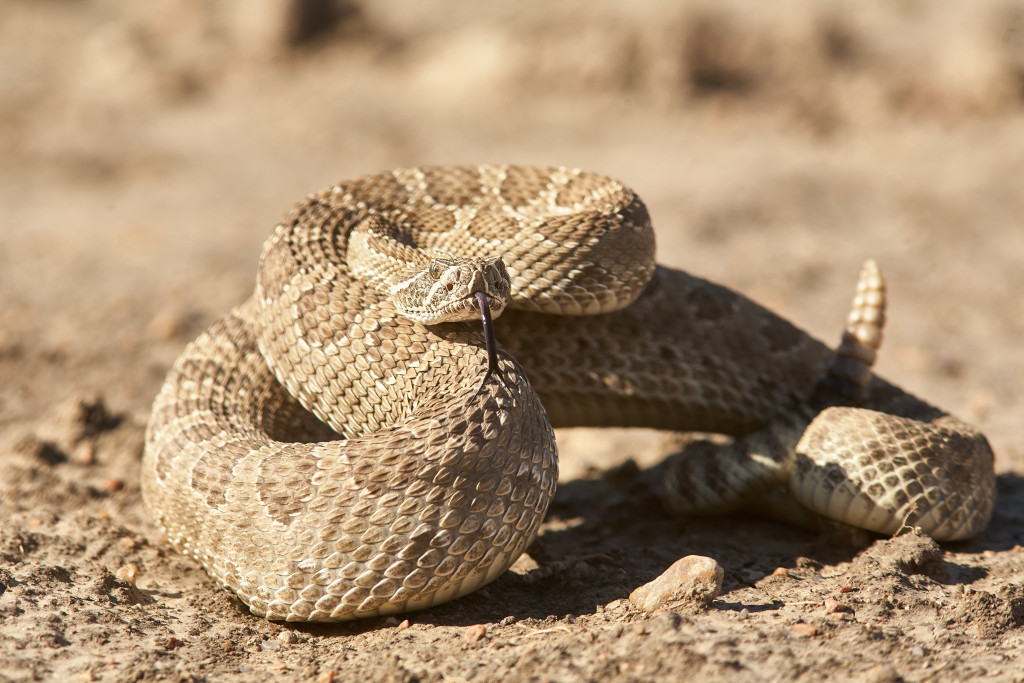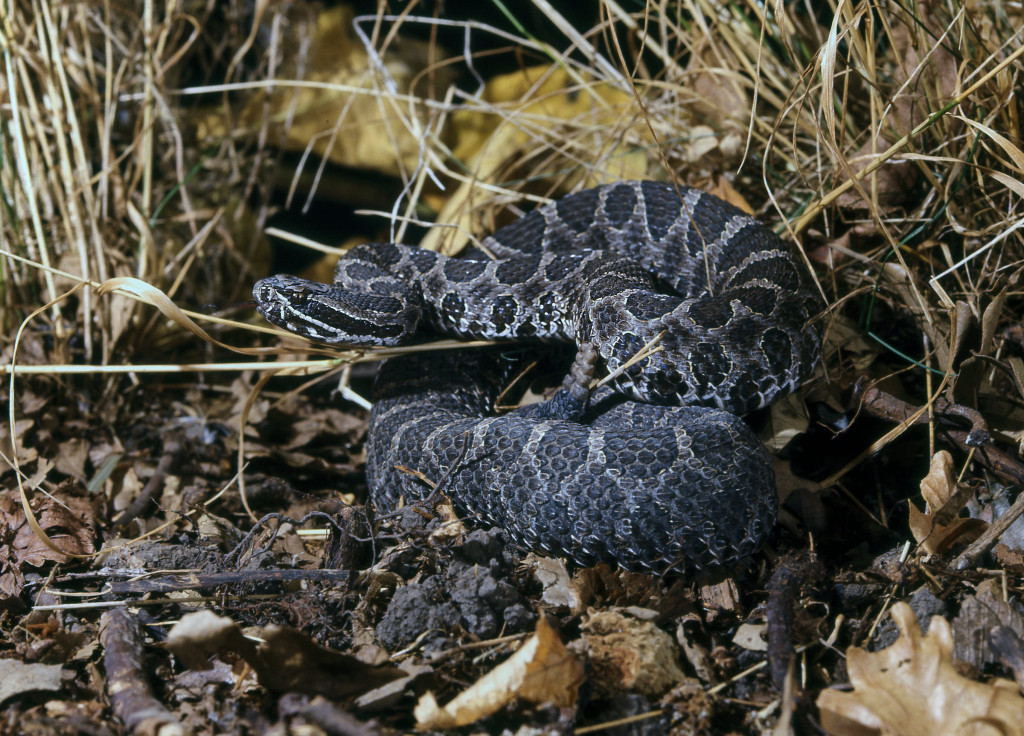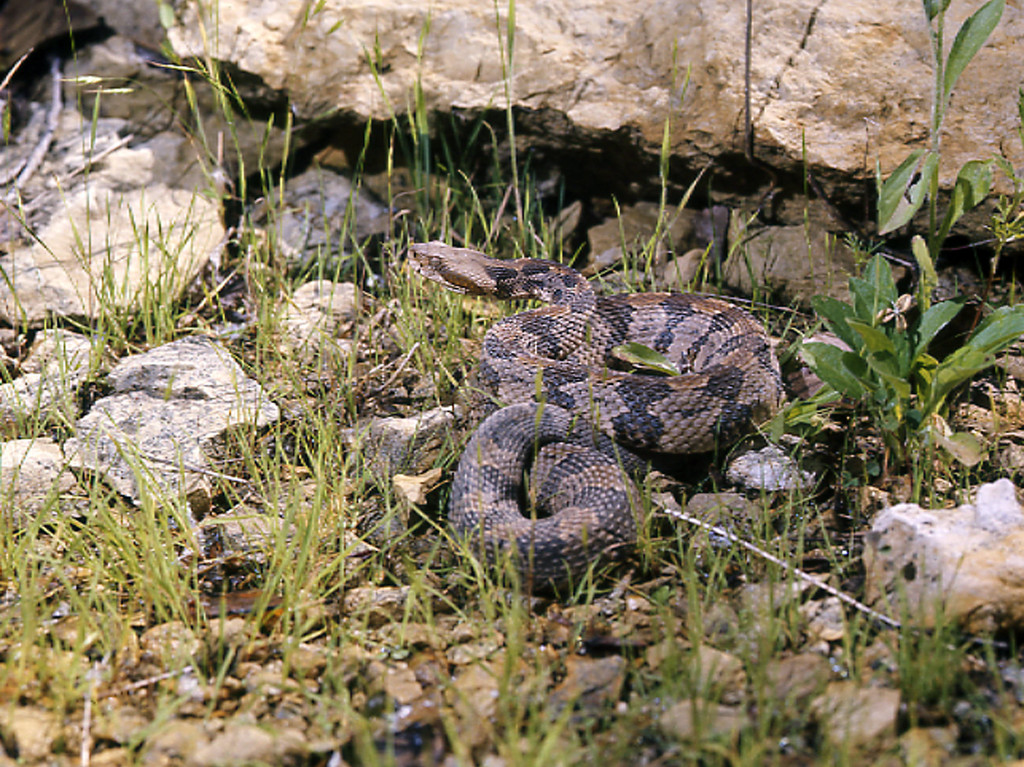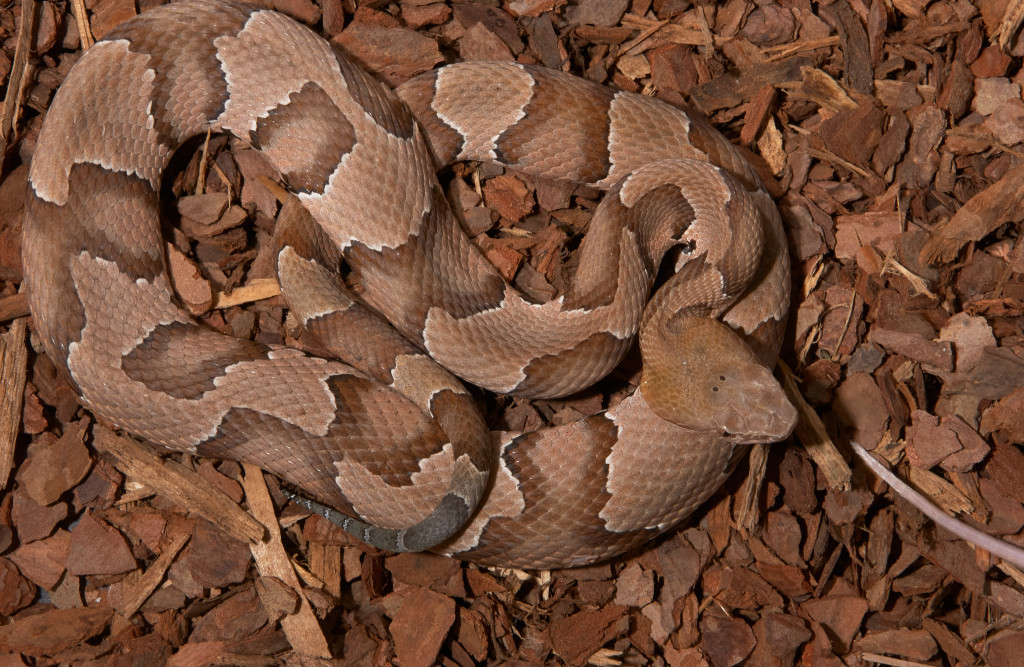By Monica Macoubrie, Wildlife Education Specialist
In Nebraska, we have 30 species of snakes, and of those species, only four of them are venomous. They are the prairie rattlesnake (Crotalus viridis), western massasauga rattlesnake (Sistrurus tergeminus), timber rattlesnake (Crotalus horridus) and copperhead (Agkistrodon contortrix). Generally found in the western half of Nebraska, the prairie rattlesnake has the widest range of all, while the other three species are restricted to the southeast. All four are considered pit vipers.
Vipers are a large group of snakes in the family Viperidae, and they are found all over the world in just about every habitat imaginable. Within the Viperidae family is the sub-family Crotalinae, also known as the pit vipers. All venomous snakes in the Americas are pit vipers, which includes the four venomous species in Nebraska. Pit vipers are distinguished by the specialized pit organ on either side of the face. These are essentially infrared receptors that detect heat energy. So, these specialized vipers see the world through light and heat. These receptors can detect warm-blooded and cold-blooded prey, but they are more responsive to warm-blooded animals.
Prairie Rattlesnake (Crotalus viridis)
The prairie rattlesnake is the most common venomous snake found in Nebraska. Its range spans roughly the western half of the state, preferring short and mixed-grass prairies with rocky outcrops or canyons. The snake is easily recognizable by its light brown, gray or dark brown blotchy skin pattern and a distinctive triangular-shaped head with pits between the eyes and lips. These pits are heat sensing and help the snake find food. During breeding season, like other rattlesnakes, males will often compete in combat rituals where they intertwine and try to knock each other to the ground for the right to breed with the females. Females will then give birth the following summer to eight to 18 live babies, as the species does not lay eggs. Some evidence supports that females will show parental care, which is highly unusual for snakes.

Western Massasauga Rattlesnake (Sistrurus tergeminus)
The western massasauga (mass- a-saw-ga) rattlesnake is Nebraska’s smallest pit viper. This species of rattlesnake is found in southeastern Nebraska in wet prairies and grasslands with wetland associations. This snake relies heavily on crayfish burrows, which they use for hibernation during the winter. Due to draining and conversion of wet prairies to agricultural fields, this snake’s habitat has been heavily reduced. The massasauga is now one of two state listed threatened species of reptiles. Just like other pit vipers, the massasauga gives birth to live young during August or early September. This snake is often mistaken for the non-venomous fox snake or water snake due to its body size, small head and small rattle. Massasaugas also do not hold their rattles as high in the air as other rattlesnake species. So, if you can’t identify a snake, leave it alone and give it plenty of space.

Timber Rattlesnake (Crotalus horridus)
The timber rattlesnake is Nebraska’s largest species of venomous snake. They are light or dark brown with a series of black cross bands down the length of the body. Timbers that are found in Nebraska have a reddish-brown stripe that extends all the way from the head to the tail. The tail is nearly always jet black and ends with a lighter colored rattle. These snakes are found in extreme southeastern Nebraska, in deciduous woodlands with exposed clearings of rocky outcrops. After emerging from hibernation, they can travel up to 2 miles or more to feed and fight potential mates. Just like with other rattlesnakes, once mated, females can delay the fertilization of their eggs and give birth to live young the following September or October.

Copperhead (Agkistrodon contortrix)
Copperheads are sort of the oddball venomous snake in Nebraska, simply because they are not a rattlesnake, but they are still pit vipers like the other venomous species in Nebraska. Meaning, they have heat-sensing pits located on their head to help find prey. Copperheads get their name from their easily recognizable copper-red color. They have a pattern of lighter colored bands that when viewed from above, resemble hourglasses. In Nebraska, the cross bands are often edged with white. The head is much wider than the neck so that it can accommodate venom glands in the cheeks. Newborns and young will have a sulfur yellow coloration at the tip of their tails, which gradually fades as they become older. These snakes are found in extreme southeastern Nebraska in wooded areas with rocky outcrops.

